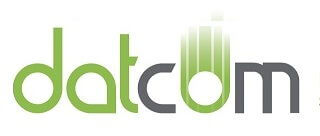When it comes to network security, we often see organizations having one of two approaches: 1) They make security a priority by implementing airtight solutions, or 2) They have no clue what network security means. Of course, if a company doesn’t have security put into place, employees might take matters into their own hands and implement unauthorized solutions. This is called shadow IT, and it has unfortunate results, even if the user has good intentions.
Shadow IT, also known as the implementation of unauthorized technology solutions of any kind–be it a free antivirus or a substitute for a productivity suite–is known to be a troubling development for security-minded businesses. Basically, an employee might notice a deficit, and take action to resolve it themselves rather than jump through the hoops of dealing with IT.
Or, alternatively, a software license might expire that holds them back from finishing a time-sensitive project. If a user no longer has the tools to accomplish their duties, they’ll find a way to do so in order to keep themselves on schedule. Instead of asking IT to handle the problem (especially if IT is flooded with work), the employee will make the decision to use shadow IT, which is a quick fix to their woes, but can lead to other security problems down the road.
Most organizations determine the danger of shadow IT by the source of the downloaded solution. For example, where did your employee find that open-source word processor? Did it come from a reputable website, or did they find it lurking on some message board somewhere deep within the recesses of the Internet? Freeware and open-source software can be helpful when used properly, but more often than not, you’ll find that it has installed toolbars on your browser, installed adware, or other threats that could expose your data to external threats.
The problem is that hackers understand that your typical end-user would rather download something free, than pay money for a software license from a reputable vendor like Microsoft. Therefore, you need to address this problem with your employees before it’s too late. You should always encourage your employees to approach IT with any concerns about their technology, and educate them on best practices in order to preserve the integrity of your systems. For example, be sure to educate them on how to best use the solutions given to them, as using unfamiliar software is also a major reason why employees might implement shadow IT.
A responsive IT department can go a long way toward keeping your technology infrastructure hiccup-free. When your employees don’t have technology difficulties, they can perform their duties more effectively without compromising data security. Outsourced IT can help your business fully leverage its assets in a way which keeps your team productive and on-task.
To learn more about our IT solutions, reach out to us at (903) 320-5330.


